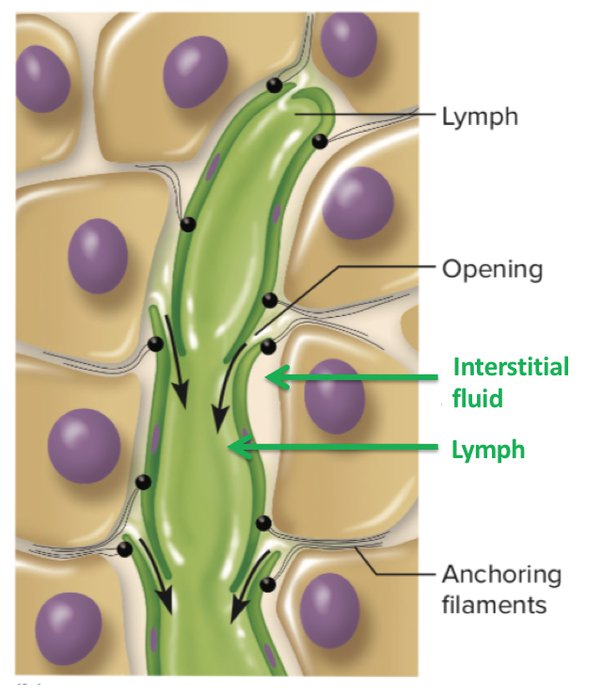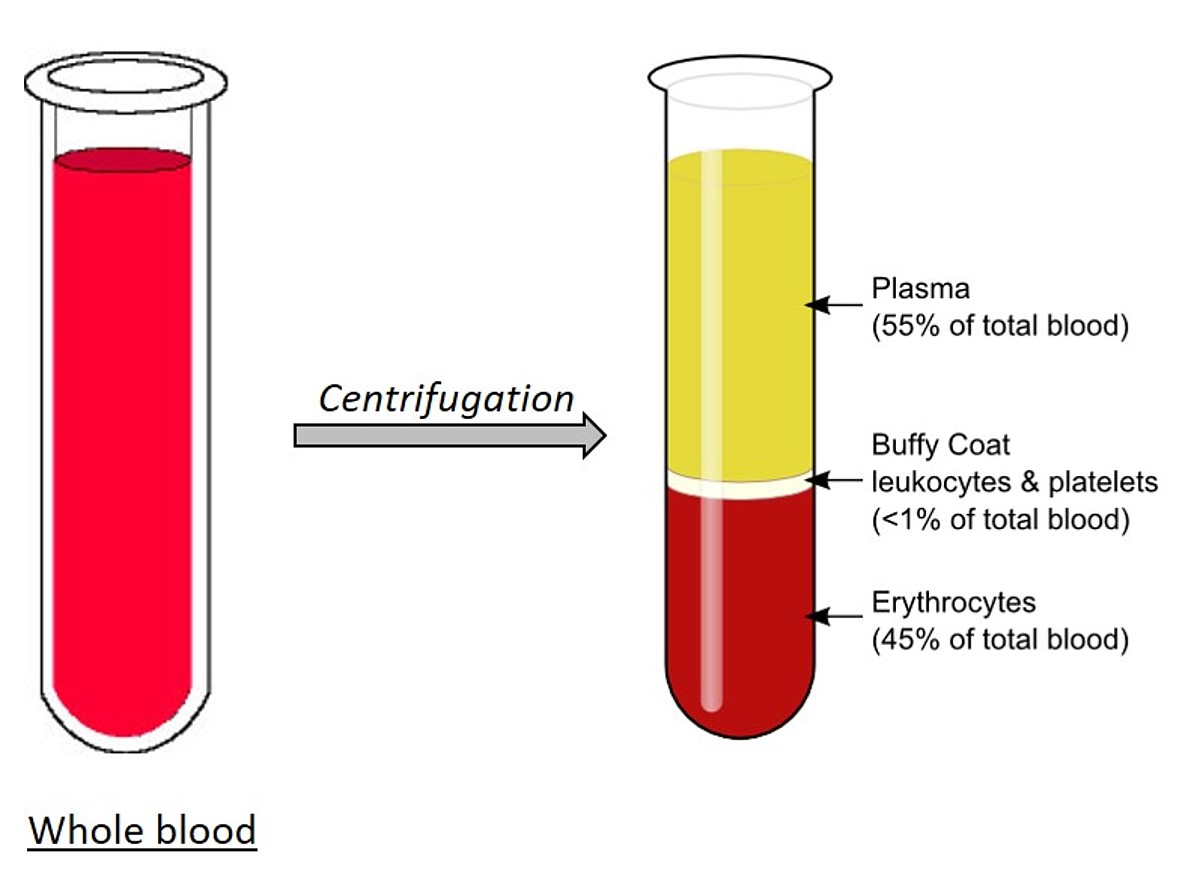Table of Contents
Lymph and Plasma
Lymph and plasma are fluids that circulate in the body. They have different origins, compositions and functions. Plasma is a component of blood that plays a crucial role in maintaining the integrity of blood vessels and preventing excessive bleeding while lymph is primarily involved in immune function and fighting infections.
Lymph is a clear or slightly yellowish fluid that is derived from interstitial fluid. Interstitial fluid is the type of fluid that surrounds cells in tissues. Lymph is formed when interstitial fluid enters the lymphatic vessels and it is transported throughout the body by the lymphatic system. Lymph also contains white blood cells like lymphocytes and macrophages as well as other immune cells.
Plasma is the liquid component of blood that remains after the blood cells and clotting factors have been removed. It is a straw-colored fluid that makes up approximately 55% of blood volume. Plasma contains a variety of substances like water, electrolytes, proteins, hormones, glucose, lipids, waste products, clotting factors and platelets.
Difference between Lymph and Plasma in Tabular format
| Factors | Lymph | Plasma |
|---|---|---|
| Composition | Lymph is Clear fluid derived from interstitial fluid. It contains lymphocytes, macrophages and other immune cells | Plasma is Liquid part of blood. It is composed mainly of water, electrolytes, proteins, hormones and waste products |
| Function | Lymph Carries white blood cells to fight infections and foreign invaders. It helps remove excess fluid and waste from tissues | Plasma Transports nutrients, hormones, electrolytes and waste products throughout the body. It helps maintain blood pressure, pH balance and body temperature |
| Color | Lymph is typically clear or slightly yellowish in color but may appear milky or cloudy if there is a high concentration of lymphocytes or fats. | Plasma is yellowish or straw-colored due to the presence of proteins such as albumin and globulins. |
| Circulation | Lymph Circulates through lymphatic vessels, lymph nodes and other lymphoid organs | Plasma Circulates through blood vessels, including arteries, veins and capillaries |
| Production | Lymph produced in various tissues and organs, including bone marrow, thymus, spleen, lymph nodes and lymphoid tissues in the digestive system | Plasma is produced in the liver and secreted into the bloodstream |
| Diagram |  |  |
Also Check – 9 Important Functions of Blood Plasma
Also Check – 13 Important Differences between Lymph and Blood
Differences between Lymph and Plasma Explained in details
Differences between Lymph and Plasma in terms of Composition
- Plasma contains water, electrolytes (such as sodium and potassium), proteins (such as albumin and globulins), hormones and other solutes. Lymph contains water, electrolytes, and proteins (such as immunoglobulins or antibodies), but at different concentrations than plasma. Lymph also contains white blood cells like lymphocytes and macrophages which are important components of the immune system.
- The protein content of plasma is higher than that of lymph. Lymph contains more immunoglobulins which are important for fighting infections.
- Plasma is constantly replenished by the liver which produces many of the proteins found in plasma. Lymph on the other hand is derived from interstitial fluid that leaks out of blood vessels and into tissues. The lymphatic system then collects and transports this fluid back to the bloodstream.
Also Check – 15 Important Differences Between Arteries and Veins
Also Check – 8 Structural and Functional Difference Between Arteries Veins and Capillaries
Also Check – Composition of the Lymph
Differences between Plasma and Lymph in terms of their Role
- Plasma plays a critical role in maintaining blood pressure and transporting various substances throughout the body which includes nutrients, hormones, electrolytes and waste products. Lymph plays a crucial role in the immune system by transporting immune cells and antibodies to fight infections and other foreign invaders.
- Plasma helps to maintain the balance of fluids and electrolytes in the body while lymph helps to remove excess fluid and waste from tissues.
- Plasma plays an important role in blood clotting while lymph does not.
- Plasma provides a medium for various metabolic reactions to occur in the body while lymph does not have a metabolic role.
Also Check – Transportation in Human Beings
Differences between plasma and Lymph in terms of Circulation
- Plasma circulates throughout the body in blood vessels which are arteries, veins, and capillaries. Lymph circulates through a separate system of vessels called the lymphatic system which is composed of lymphatic vessels, lymph nodes and other lymphoid organs.
- Plasma is constantly circulating through the body driven by the pumping action of the heart.Lymph circulation is slower and more dependent on muscle contractions and other movements in the body like breathing and exercise.
Differences between Plasma and Lymph in terms of Color
- Plasma is yellowish or straw-colored due to the presence of proteins such as albumin and globulins. Lymph is typically clear or slightly yellowish in color but may appear milky or cloudy if there is a high concentration of lymphocytes or fats.
- The color of plasma may be affected by various factors such as hydration status, diet and medications. The color of lymph may be affected by various factors, such as inflammation, infection and the presence of certain diseases.
Differences between Plasma and Lymph in terms of production
- Plasma is produced in the liver and secreted into the bloodstream. Lymph is produced in various tissues and organs which includes the bone marrow, thymus, spleen, lymph nodes and lymphoid tissues in the digestive system.
- The production of plasma is regulated by various hormones and factors such as insulin, glucagon and growth hormone. The production of lymph is regulated by the immune system which activates lymphocytes and other immune cells to produce lymph and respond to infections and other immune challenges.
- The production of plasma is constant and ongoing with the liver constantly secreting proteins and other substances into the bloodstream. The production of lymph is typically triggered by specific immune responses such as the activation of B cells and T cells in response to infections or other immune challenges.
Also Check – 9 Important function of Lymphatic System
Similarities between lymph and plasma
While lymph and plasma have many differences they also share some similarities in terms of their composition and function they are as follows –
- Both lymph and plasma are fluids that circulate in the body.
- Both lymph and plasma contain electrolytes such as sodium and potassium ions.
- Both lymph and plasma contain waste products such as urea and creatinine.
- Both lymph and plasma play important roles in maintaining fluid balance in the body.
- Both lymph and plasma are involved in transporting substances throughout the body such as hormones and nutrients.
- Both lymph and plasma contain proteinssuch as immunoglobulins and albumin.
- Both lymph and plasma can become infected by pathogens uch as viruses and bacteria.
Also Check-Key Organs of the Lymphatic System: Functions and Locations.
Curious Questions on Lymph And Plasma
What is the main function of lymph compared to plasma?
Lymph is primarily involved in immune functions, transporting white blood cells and fighting infections, while plasma transports nutrients, hormones, electrolytes, and waste products throughout the body.
How does the composition of lymph differ from that of plasma?
Lymph is derived from interstitial fluid and contains lymphocytes, macrophages, and fewer proteins compared to plasma, which is a part of blood containing a higher concentration of proteins, clotting factors, and other substances.
Why is lymph typically clear or slightly yellowish?
Lymph’s colour comes from its composition, which includes a high concentration of lymphocytes or fats, making it clear or slightly yellowish. It may appear milky or cloudy with a higher concentration of these components.
What role does the liver play in the production of plasma?
The liver constantly produces and secretes many of the proteins found in plasma, playing a crucial role in its production and maintenance.
How is plasma involved in blood clotting?
Plasma contains clotting factors and platelets, which are essential for the blood clotting process, a function not performed by lymph.
What triggers the production of lymph in the body?
Lymph production is typically triggered by specific immune responses, such as the activation of B cells and T cells in response to infections or other immune challenges.
Why does plasma circulate faster than lymph?
Plasma circulation, driven by the heart’s pumping action, is faster and continuous. In contrast, lymph circulation is slower and more dependent on muscle contractions and body movements like breathing and exercise.
Can lymph become infected?
Yes, lymph can become infected by pathogens such as viruses and bacteria, just like plasma.
What substances are commonly found in both lymph and plasma?
Both lymph and plasma contain electrolytes like sodium and potassium, waste products such as urea and creatinine, and proteins such as immunoglobulins and albumin.
How does the colour of plasma change, and why?
The colour of plasma can change due to various factors like hydration status, diet, and medications, typically appearing yellowish or straw-coloured.
Do lymph and plasma contribute to maintaining the body’s fluid balance?
Yes, both lymph and plasma play crucial roles in maintaining fluid balance in the body.
Why does lymph appear milky sometimes?
Lymph appears milky when there’s a high concentration of fats or lymphocytes in it, indicating different physiological or pathological states.
What makes lymphatic circulation unique compared to blood circulation?
Lymphatic circulation involves a separate system of vessels and lymphoid organs, and it is crucial for immune defence, unlike blood circulation which is primarily for transport and nutrient distribution.
Can lymph carry hormones and nutrients like plasma?
Yes, lymph also transports hormones and nutrients, though its primary function is related to the immune system.
How do the liver and immune system regulate the production of plasma and lymph, respectively?
The liver regulates plasma production by secreting proteins and other substances, while the immune system regulates lymph production by activating immune cells in response to infections.
Is the production of plasma constant, and why?
Yes, plasma production is constant and ongoing to ensure a steady supply of proteins and other substances necessary for various body functions.
How does the body ensure that lymph and plasma don’t mix?
The body’s circulatory systems are designed to keep lymph and blood separate, though they interact at various points, like the lymphatic vessels transporting lymph back to the bloodstream.
Also Check – What is Interstitial Fluid and its Vital Role in Cellular Health and Function

4 Comments on “Difference between Lymph and Plasma”